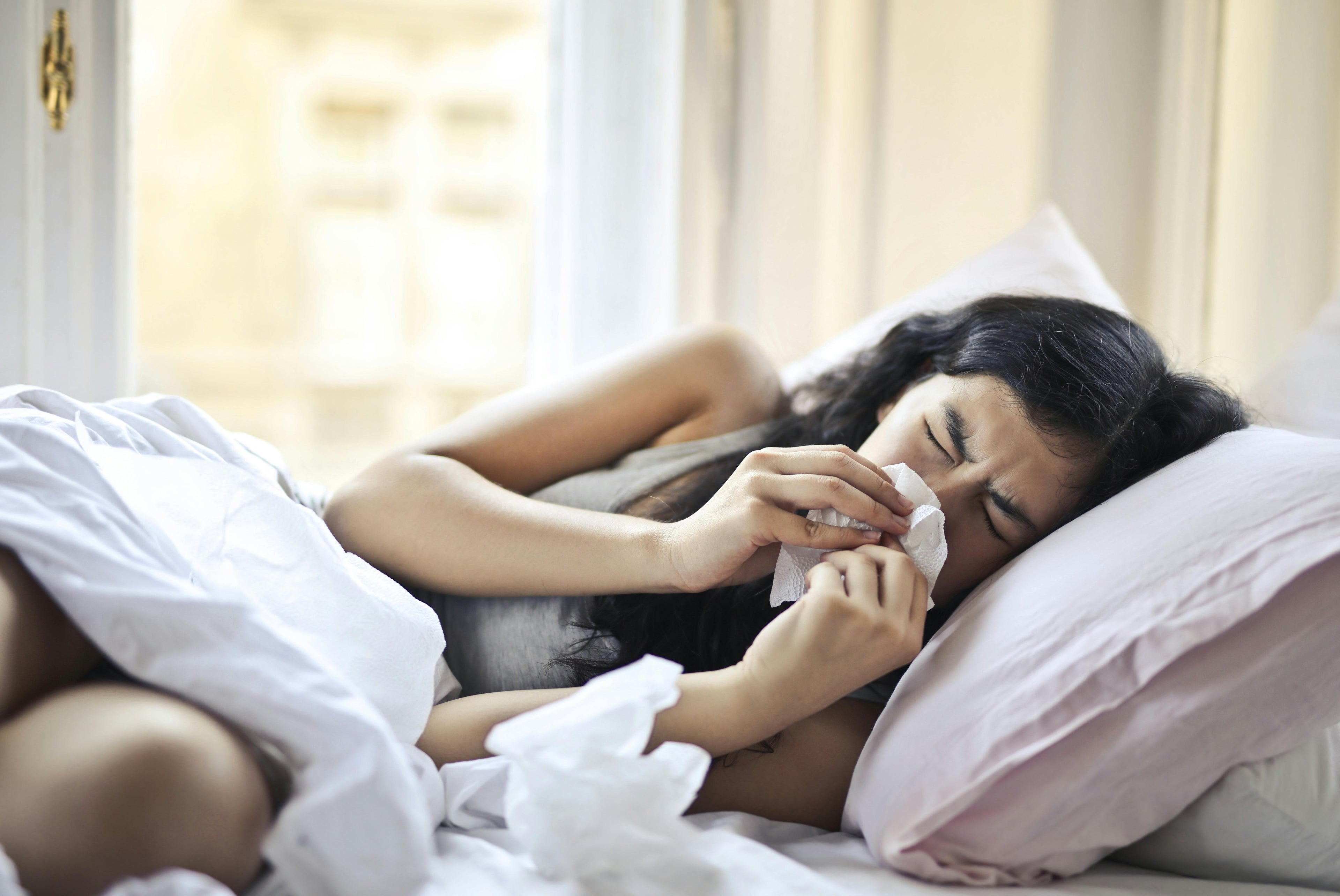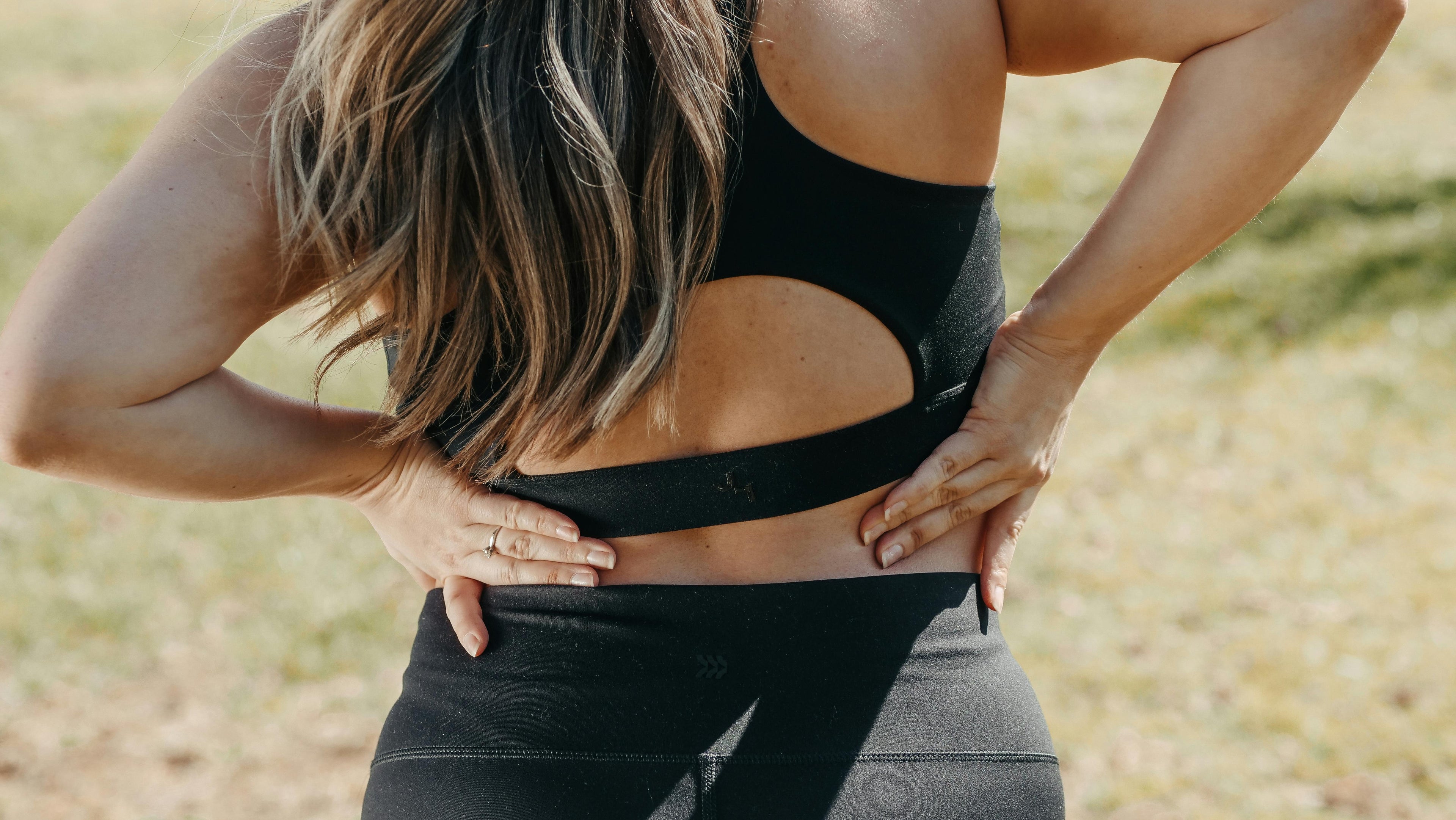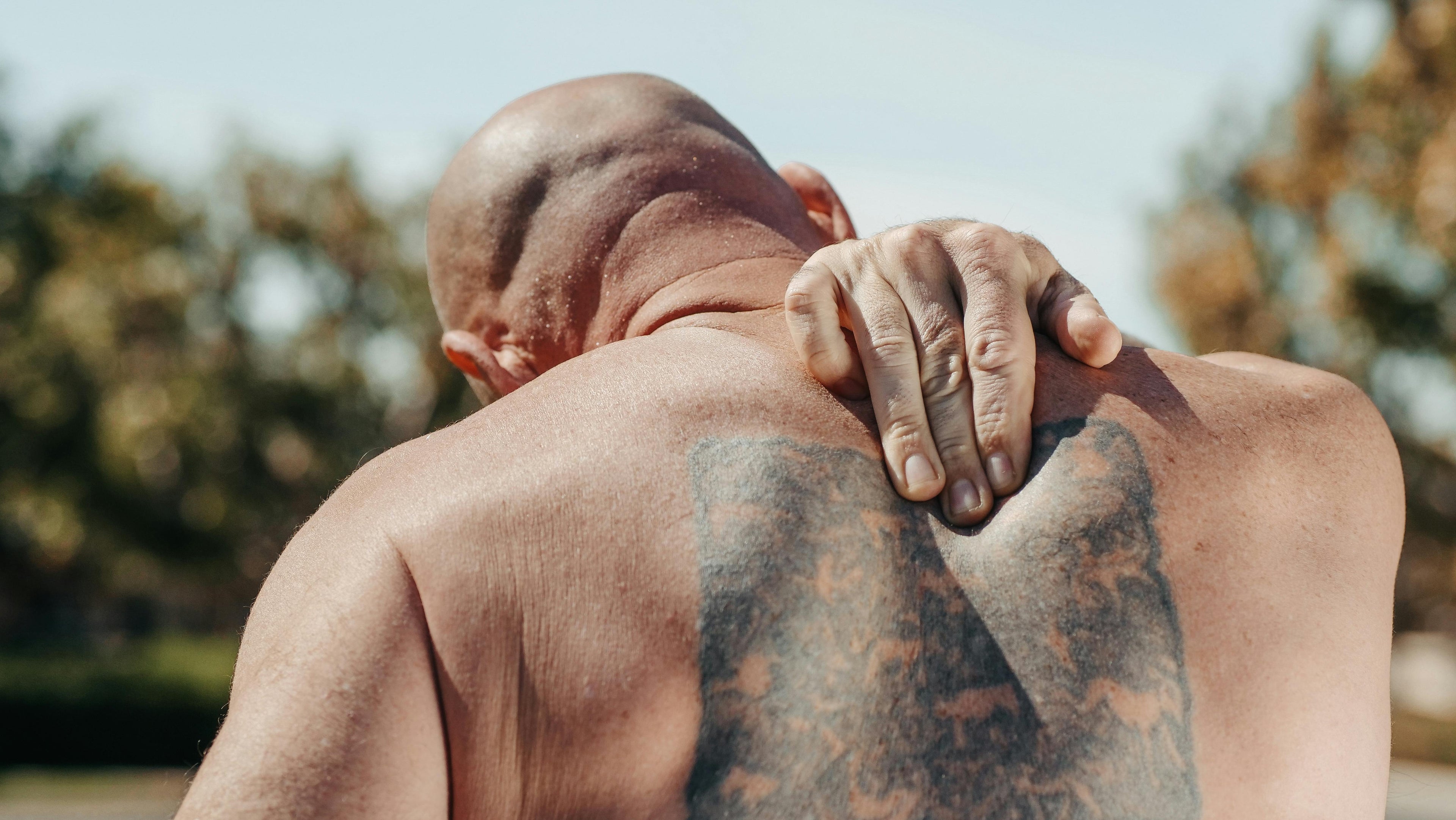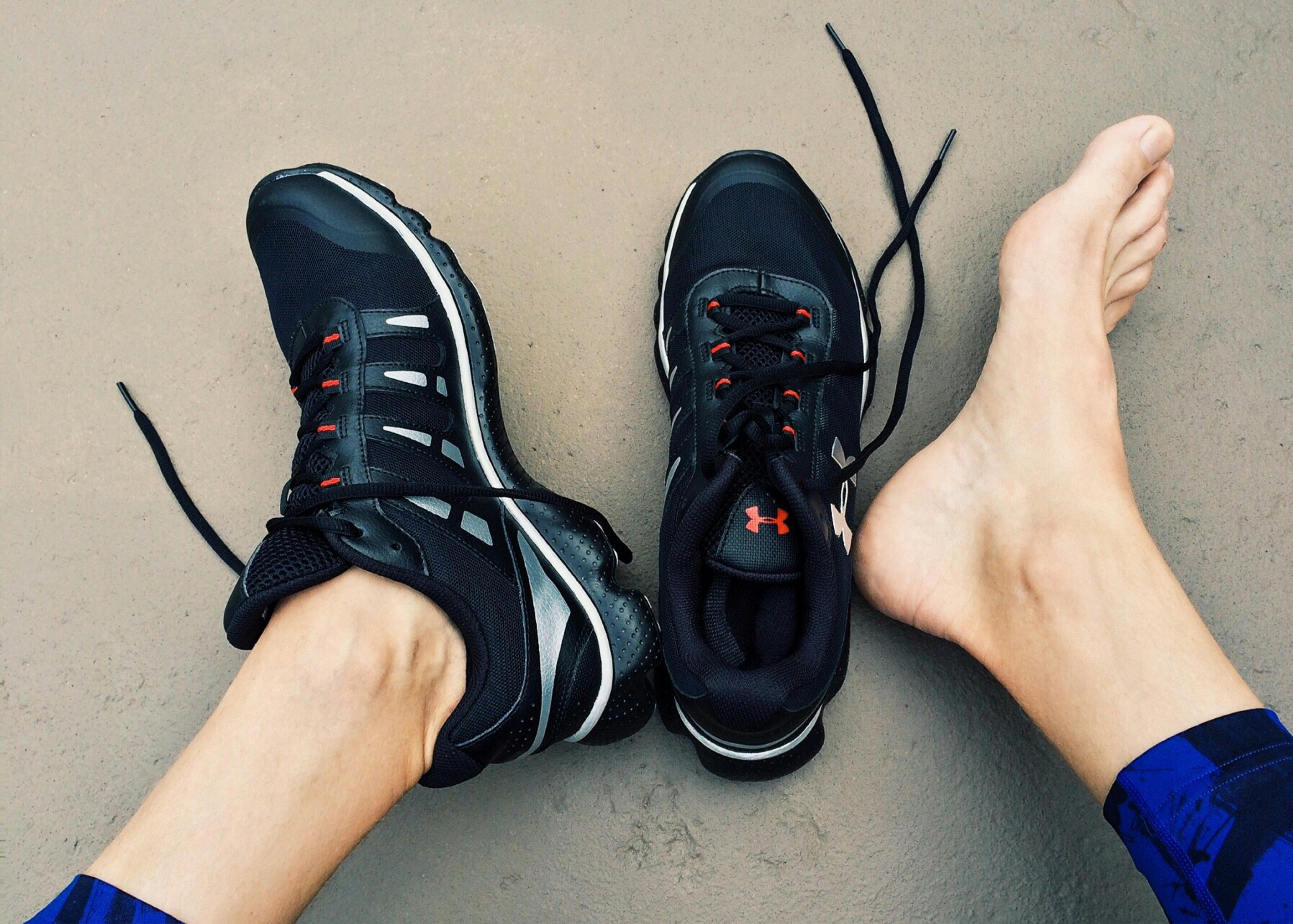Acupuncture’s Evidence for Common Health Conditions

Acupuncture for Allergic Rhinitis (Hay Fever)
What the Research Shows for Acupuncture for Allergic Rhinitis
Symptom Relief: Acupuncture is shown to ease nasal congestion, sneezing, and itching in seasonal allergic rhinitis. A large randomized trial of 422 patients found 12 sessions of acupuncture over 8 weeks significantly improved rhinitis-specific quality of life and reduced antihistamine use compared to a sham (fake) acupuncture or medication alone. These improvements persisted through allergy season, though they were modest in magnitude.
Better Than Sham: A 2020 meta-analysis of 39 trials (3,433 patients) found all acupuncture types were superior to sham acupuncture for total nasal symptom scores and quality of life. Intriguingly, moxibustion (warming an herb near an acupuncture point) achieved the fastest nasal symptom relief, often within just 6 treatments. Combining manual acupuncture with standard medications led to the biggest quality of life gains by 9 sessions.
Guideline Endorsements: Acupuncture is increasingly recommended by allergy guidelines. The American Academy of Otolaryngology suggests clinicians may offer acupuncture for allergic rhinitis patients who want non-drug therapy. The World Federation of Acupuncture-Moxibustion Societies (WFAS) even developed a 2024 guideline, calling acupuncture “one of the most effective complementary therapies” for allergic rhinitis.
Mechanisms: Studies hint that acupuncture may regulate immune responses – for example, lowering IgE antibody levels tied to allergies. It might also affect neuroendocrine pathways that influence inflammation in nasal tissues.
Safety: Reported side effects are minimal, usually mild needle-site reactions. In the large allergy trial, no serious adverse events occurred.
Bottom Line for Allergies
For allergic rhinitis, acupuncture can be an effective add-on therapy. Evidence suggests improvements in nasal symptoms and quality of life over placebo. Patients who want to reduce antihistamine use or cannot tolerate medication side effects might especially benefit. Always seek a qualified practitioner, as research-backed protocols (including specific acupoints or moxibustion) yield the best results.

Acupuncture for Breech Presentation in Pregnancy
What the Research Shows for Acupuncture for Breech Presentation
Moxibustion for Turning Breech Babies: A form of acupuncture called moxibustion, where an herb stick is burned near the acupoint BL-67 (outer corner of the little toe), is traditionally used to encourage breech babies to turn head-down. Modern evidence from a 2023 Cochrane Review of 13 trials (~2,181 women) suggests moxibustion plus usual prenatal care probably reduces the chance of breech presentation at birth. Compared to usual care alone, adding moxibustion increased head-down (cephalic) births (risk ratio ~0.87, where <1 favors moxibustion).
Limited Impact on C-Section Rates: Interestingly, turning more babies did not significantly reduce cesarean delivery rates. This means while more babies were head-down, overall C-section frequency stayed about the same. More research is needed to see if that holds true in larger trials.
When and How It’s Done: In studies, moxibustion is usually started around 32–36 weeks of pregnancy. Women (or a trained partner) apply moxa heat near their little toes daily for 1–2 weeks. Some trials combined moxa with acupuncture or special exercises, but results mainly support moxibustion itself as the key active component.
Safety and Side Effects: Moxibustion is noninvasive, but can cause temporary side effects like increased fetal movements, mild uterine cramping, nausea, or skin burns if done improperly. One study noted these effects occurred in about 40% of women using moxa vs. none in controls. No serious risks (like fetal distress or preterm labor) have been conclusively linked to moxibustion in trials; still, proper technique and supervision are important.
Bottom Line for Breech Babies
For breech presentation, acupuncture’s moxibustion therapy offers a safe, gentle option that likely increases the odds of a baby turning head-down before birth. It’s most beneficial when started before 37 weeks and done alongside standard prenatal care. While it may not lower C-section rates, many moms value avoiding a breech birth. If you’re interested, discuss it with your midwife or OB – many are familiar with moxibustion or can refer you to a qualified provider.

Acupuncture for Chronic Pain (Back, Neck, Arthritis, Headaches)
Chronic pain is one of the most common reasons patients try acupuncture. Conditions like lower back pain, neck pain, osteoarthritis, and migraines have been extensively studied.
What the Research Shows for Acupuncture for Chronic Pain
Overall Effectiveness: High-quality evidence, including an individual patient meta-analysis of 20,000+ patients, concludes that acupuncture is significantly more effective than no treatment and also better than sham acupuncture for chronic musculoskeletal pain, osteoarthritis, and chronic headaches. On average, true acupuncture outperformed sham by about 0.2–0.3 standard deviations and no-acupuncture by ~0.5 SD, meaning real pain relief beyond placebo effects. These benefits, though moderate, persist over time – only a 15% drop in pain relief at 1 year post-treatment.
Back and Neck Pain: Both the American College of Physicians and UK’s NICE recommend acupuncture as a treatment option for chronic low back pain. Studies show meaningful improvements in pain and function versus usual care, particularly in the short term (up to 3 months) . Acupuncture even made it into the 2021 NICE guideline on chronic pain, which found 27 studies showing reduced pain and better quality of life up to 3 months. NICE suggests a course of up to 5 acupuncture sessions by a trained professional as part of primary pain management.
Arthritis (Osteoarthritis): For knee osteoarthritis, meta-analyses consistently find acupuncture provides pain relief and functional improvement better than sham and standard care. For example, a 2020 review noted electroacupuncture (acupuncture with mild electrical current) was especially effective, with clinically relevant drops in pain on the WOMAC osteoarthritis scale. Another network meta-analysis found that while needle acupuncture’s effects on pain could be small in some trials, it consistently beats waiting list controls and is as effective as nonsteroidal drugs for many patients. The analgesia can last beyond the treatment course; one systematic review found sustained benefits 3–6 months post-treatment for many arthritis sufferers.
Chronic Headache & Migraine: Acupuncture is effective in reducing the frequency of chronic headaches, including migraines and tension headaches. Trials show patients receiving acupuncture have fewer headache days than those receiving sham or usual care. Guidelines like those from the American Headache Society endorse acupuncture as a preventive option for migraines, especially for patients wanting to avoid drug side effects.
Beyond Placebo?: Some skeptics argue acupuncture is “just a placebo.” However, the large meta-analysis by Vickers et al. found that while placebo plays a role, it cannot fully explain acupuncture’s pain relief. Notably, trials with more “active” sham controls (like needles inserted in non-acupuncture points) showed smaller differences, but real acupuncture still had an edge. This suggests specific needle placement and technique add value beyond the ritual of treatment.
Bottom Line for Chronic Pain
For chronic pain conditions like back pain, neck pain, arthritis, and headaches, acupuncture is a reasonable, evidence-backed option. It tends to provide moderate pain relief and functional gains, on par with or better than pain medications, without the systemic side effects. Benefits often last months after treatment, especially if you complete a full course. Patients who integrate acupuncture into their pain management plan often report not just less pain, but better sleep and mood – crucial for chronic pain coping. Given its safety profile (rare adverse events under skilled hands), a trial of acupuncture is considered worthwhile for persistent pain.

Acupuncture for Cancer Pain and Supportive Care
Managing pain in cancer can be challenging. Acupuncture, often alongside conventional treatments, has been explored for cancer-related pain, nausea, and other symptoms.
What the Research Shows for Acupuncture for Cancer Pain and Support
Pain Reduction and Lower Opioid Use: A notable 2019 systematic review and meta-analysis in JAMA Oncology looked at 17 RCTs (1,111 patients) using acupuncture or acupressure for cancer pain. It found that real acupuncture significantly reduced pain intensity compared to sham (fake) acupuncture (mean difference ~1.4 points on a 0–10 scale). When acupuncture/acupressure were added to pain medication, patients had greater pain relief than with drugs alone. Importantly, two trials reported that acupuncture combined with standard care led to patients using lower opioid doses – about 30 mg less morphine per day on average.
Integrative Cancer Care: Acupuncture is increasingly offered in cancer centers (e.g., Memorial Sloan Kettering, MD Anderson) as part of integrative oncology. Beyond pain, it helps with chemotherapy-related nausea, fatigue, neuropathy, and mood. Studies show, for instance, acupuncture can significantly ease chemo-induced nausea/vomiting, sometimes comparable to antiemetic drugs, without added side effects.
Palliative Care Setting: In advanced cancer or hospice care, acupuncture may improve quality of life. A review of 5 smaller studies in palliative cancer care found a “favorable effect of acupuncture on pain relief”, though more research is needed. Patients often report better sleep and less anxiety in addition to pain control.
Safety: Acupuncture is generally safe for cancer patients when done by trained practitioners following sterile precautions. A 2018 analysis of acupuncture safety in oncology found adverse events are rare and mostly minor (brief dizziness, minor bleeding). Importantly, acupuncture does not interfere with chemotherapy or radiation – it’s a supportive therapy, not an alternative. Always inform your oncology team if you’re receiving acupuncture.
Bottom Line for Cancer Pain
For patients dealing with cancer pain, acupuncture can be a valuable adjunct to standard pain management. Evidence suggests it can enhance pain relief and potentially reduce the need for high opioid doses. It may also help control other symptoms (nausea, neuropathy), improving overall comfort. Many patients find empowerment in this gentle, drug-free therapy during a challenging time. Always coordinate with your oncologist to ensure integrated, safe care.

Acupuncture for Menopause Symptoms (Hot Flashes & More)
What the Research Shows for Acupuncture for Menopause Symptoms
Hot Flashes and Night Sweats: Acupuncture has shown mixed but generally positive results for vasomotor symptoms (hot flashes, day-and-night sweating). A pragmatic trial in Denmark (2019) treated 36 menopausal women with 5 weekly acupuncture sessions and compared to 34 controls. After 6 weeks, the acupuncture group had significantly fewer hot flashes and night sweats than controls (about 50% reduction in hot flash score). They also reported better sleep and less emotional and physical discomfort.
Sham-Controlled Evidence: Some rigorous trials with sham acupuncture (using placebo needling) found no difference between real and sham for hot flash frequency. A 2013 Cochrane Review of 16 studies (1,155 women) concluded there’s insufficient evidence that acupuncture is more effective than sham for hot flashes. However, compared to no treatment, acupuncture did appear beneficial (moderate reduction in hot flash frequency and severity). In short, the “placebo effect” of acupuncture is strong in menopause – but even placebo or expectancy can yield real relief when you’re suffering frequent flushes.
Hormone Levels: Some studies suggest acupuncture might influence hormone levels in menopausal women. For instance, one trial saw increases in estrogen (E2) and decreases in follicle-stimulating hormone (FSH) similar to hormone therapy. Clinical significance of these lab changes isn’t clear, but it hints that acupuncture may modulate the hypothalamic–pituitary–ovarian axis.
Mood, Sleep, and Quality of Life: Beyond hot flashes, menopause often comes with insomnia, mood swings, and fatigue. Acupuncture trials consistently report improvements in sleep quality and anxiety in menopausal women. Women often describe feeling more balanced and less irritable. These holistic benefits make acupuncture attractive to those who cannot or prefer not to take hormone replacement therapy (HRT).
Safety: Acupuncture is safe for menopause symptoms, with very low risk. In the Danish trial, a few women had minor side effects (temporary dizziness or minor pain), but no serious adverse events. This contrasts with HRT, which though effective, carries risks like blood clots and certain cancers for some women.
Bottom Line for Menopause
For menopausal symptoms, especially hot flashes and insomnia, acupuncture offers a gentle, side-effect-free approach. While high-quality evidence has varied (real acupuncture often performs similarly to sham in trials), many women report genuine relief. The therapy may not erase every hot flash, but it can reduce frequency/intensity and greatly improve sleep and well-being. Given its safety profile, trying acupuncture is reasonable for women seeking alternatives to hormones or antidepressants for menopause management.

Acupuncture for Osteoarthritis (Joint Pain & Function)
What the Research Shows for Acupuncture for Osteoarthritis
Knee OA – Pain and Function: Dozens of studies have tested acupuncture for knee OA. A comprehensive 2022 meta-analysis of 80 trials (~9,933 patients) found that acupuncture (both manual and electroacupuncture) significantly reduced knee pain intensity versus sham, usual care, or even NSAIDs (anti-inflammatory drugs). Pain scores dropped about 20–25 points more on a 0–100 scale with acupuncture than with no acupuncture. Acupuncture also improved physical function (like walking and bending) better than controls. Notably, electroacupuncture tended to outperform manual needling in head-to-head comparisons – likely due to enhanced pain relief from electrical stimulation.
Long-Term Benefits: Some worry acupuncture’s effects won’t last. However, multiple studies show benefits persist for months. A review found pain relief and function gains lasted at least 3–6 months post-treatment for many knee OA patients. Acupuncture might even slow down quality-of-life decline by keeping people more active and pain-managed in the interim.
Hip and Other Joints: Fewer studies exist for hip OA, but those that do suggest similar modest pain relief. Acupuncture is also used for hand OA (e.g., thumb arthritis) and can reduce pain/stiffness, though data are limited. Since these conditions often have fewer treatment options beyond painkillers and surgery, acupuncture is a welcome option.
Compared to Other Therapies: In knee OA, acupuncture has been compared to exercise, education, medications, and even injections:
Versus exercise: Exercise is foundational for OA. Acupuncture adds pain relief on top of exercise – one trial found the combo of acupuncture + physiotherapy exercise was superior to exercise alone in reducing pain.
Versus corticosteroid injections: Some evidence suggests acupuncture’s pain relief can be comparable to steroid injections for knee OA, without injection side effects. However, head-to-head trials are few.
Versus NSAIDs: A network meta-analysis indicated acupuncture might relieve pain as well as or slightly better than NSAIDs for some patients. Acupuncture has the advantage of not causing NSAID side effects (stomach ulcers, etc.).
Safety: Acupuncture for OA is low-risk. Mild bruising or soreness at needle sites is the most common complaint. A huge German study of thousands of acupuncture patients found serious adverse events exceedingly rare (on the order of 1 in 10,000 sessions). In osteoarthritis, where patients are older, choosing a licensed acupuncturist who follows clean needle technique is important.
Bottom Line for Osteoarthritis
For osteoarthritis pain, especially of the knee, acupuncture is an evidence-supported therapy to reduce pain and improve joint function. It can be used alongside exercise and medications, potentially lowering reliance on pain pills. Many arthritis patients appreciate that acupuncture relaxes muscles around the joint and may trigger endorphin release for natural pain relief. If you have troublesome arthritis pain not fully controlled by standard treatments, acupuncture is worth considering as part of a comprehensive pain management plan.

Acupuncture in Pediatrics (Kids & Teens)
Parents are often curious (and cautious) about acupuncture for children. Can kids benefit? Is it safe? The evidence base is growing, particularly for pain, headaches, and certain paediatric conditions.
What the Research Shows for Acupuncture for Paediatrics
Pain and Headaches: A 2020 review concluded acupuncture is effective for pediatric pain in specific scenarios: it helps reduce pain during medical procedures (like needle sticks), eases infantile colic, and can relieve headaches or migraine in adolescents. For example, small trials found children with migraines had fewer headaches with acupuncture compared to sham. Acupuncture is also used for post-surgery pain control in children, sometimes reducing the need for opioid painkillers.
Nausea/Vomiting: The strongest pediatric evidence is for postoperative nausea. Acupuncture or acupressure (like pressing the P6 wrist point) can significantly lower rates of post-surgery or chemotherapy-induced nausea and vomiting in children. In fact, studies show acupuncture may prevent vomiting in kids after tonsillectomy or appendectomy better than standard anti-nausea meds.
Other Uses: There’s promising data on acupuncture for conditions like ADHD, autism spectrum-related irritability, and cerebral palsy spasticity, but these are early-stage studies. For nocturnal enuresis (bedwetting), a few trials reported acupuncture helped reduce bedwetting nights, though more research is needed. Likewise, in teens with chronic pelvic pain or menstrual cramps, acupuncture has shown pain reductions in small studies, improving school attendance and daily function.
Safety in Children: Safety is paramount. A 2011 systematic review in Pediatrics analyzed 37 studies and found 279 adverse events in children, 253 of which were mild (like brief pain, bruising, or crying). Only 25 events were serious, and these were isolated cases often tied to substandard practice (e.g., unsterile technique leading to infection, or an improperly placed needle causing a problem). The overall incidence of mild side effects was about 11.8%, and serious events exceedingly rare (≈1 in 200 kids, mostly associated with one poorly done study). In expert hands, pediatric acupuncture is quite safe – needles are typically inserted very shallowly and retained briefly. Many children even find acupuncture relaxing or fun (some clinics use distraction and kid-friendly techniques).
Kid-Friendly Techniques: Acupuncturists often adapt their approach for kids: using fewer needles, non-needle techniques like acupressure or laser acupuncture, and making the environment child-friendly. Babies and toddlers might receive quick insertions and removals rather than leaving needles in. For needle-phobic kids, acupressure, massage, or shonishin (Japanese pediatric acupuncture with tools that tap or brush the skin) can stimulate the same points without puncturing the skin.
Bottom Line for Pediatrics
Children and teenagers can safely receive acupuncture, and it may help with pain, headaches, nausea, and certain chronic conditions. The key is finding a practitioner experienced in pediatrics. The needles are hair-thin, and the process is usually well-tolerated – some kids even fall asleep during treatment. If your child has a condition that hasn’t responded well to standard treatments, pediatric acupuncture is worth discussing with your pediatrician as a complementary option. Always ensure the provider is licensed and uses child-appropriate methods.

Acupuncture for Plantar Fasciitis (Heel Pain)
Plantar fasciitis causes sharp heel pain (especially with the first morning steps). Traditional treatments include rest, stretching, night splints, and injections. Acupuncture has emerged as another option.
What the Research Shows for Acupuncture for Plantar Fasciitis
Pain Relief: Several small randomised trials indicate acupuncture can significantly relieve plantar fasciitis pain. In one trial, 53 patients were split into two acupuncture groups: one had needles at a site near the heel (P.C. 7 acupoint), the other at a neutral site (LI 4 point). Both groups improved, but the specific heel-focused acupuncture yielded greater pain reduction at 1 month:
Morning first-step pain decreased by ~23 points (on 0–100 scale) with heel acupuncture vs. ~12 points in the control acupuncture.
Pressure pain threshold (a measure of how much pressure the heel could tolerate) improved significantly only in the heel acupuncture group.
No serious side effects occurred.
Acupuncture vs. Standard Care: Another study compared acupuncture plus standard care (ice, NSAIDs, stretching) to standard care alone, over 8 weeks. Both groups got better (since plantar fasciitis often improves with time and stretching), but the acupuncture group had slightly faster and greater pain reductions by week 8. However, differences were small and not all were statistically significant. This suggests acupuncture might accelerate recovery when added to usual care.
Specific Points: Traditional Chinese Medicine often links heel pain to meridians involving the kidney or bladder channel. Points like Kidney-3 or Bladder-60 near the ankle, and local trigger points on the calf, are commonly used. Some research suggests P.C. 7 (Hand) was effective specifically due to a pain referral connection (this is a less common approach). Generally, acupuncturists will treat both the heel and related distal points to address plantar fasciitis.
Patient Experience: Patients often report that acupuncture diminishes that morning agony and allows them to be more active during the day. Given that conventional therapies can take weeks or months for full relief, acupuncture can be a helpful tool to manage pain in the interim, possibly reducing the need for repeated steroid injections (which carry risks).
Bottom Line for Plantar Fasciitis
For stubborn plantar fasciitis, acupuncture is a worthwhile adjunct therapy. Clinical studies show a trend toward reduced heel pain and improved function within weeks of treatment. It’s safe and can be combined with stretching, orthotics, or physical therapy. If you love to stay on your feet but heel pain is slowing you down, acupuncture might help speed up your recovery and get you moving comfortably again.
Acupuncture Effectiveness: Conclusion & References
Acupuncture is increasingly supported by scientific evidence across a spectrum of conditions. While it’s not a magic cure-all, it can provide significant relief and improve quality of life for many patients, often with minimal side effects. It’s important to have realistic expectations: acupuncture typically works gradually and best as a course of treatment (e.g., weekly sessions for several weeks). The evidence above empowers patients to make informed decisions and discuss acupuncture with their healthcare providers as a complementary therapy.
References:
1. Brinkhaus B, et al. (2013). Acupuncture in patients with seasonal allergic rhinitis: a randomized trial. Annals of Internal Medicine, 158(4):225-234. DOI: 10.7326/0003-4819-158-4-201302190-00002
2. Yin Z, et al. (2020). Acupuncture methods for allergic rhinitis: A systematic review and bayesian meta-analysis of RCTs. Chinese Medicine, 15:109. DOI: 10.1186/s13020-020-00389-9
3. Coyle ME, et al. (2023). Cephalic version by moxibustion for breech presentation. Cochrane Database Syst Rev, Issue 7, Art. No.: CD003928. DOI: 10.1002/14651858.CD003928.pub4
4. Vickers AJ, et al. (2018). Acupuncture for chronic pain: update of an individual patient data meta-analysis. Journal of Pain, 19(5):455-474. DOI: 10.1016/j.jpain.2017.11.005
5. National Institute for Health and Care Excellence (NICE). (2021). Chronic pain (primary and secondary) in over 16s: assessment of all chronic pain and management of chronic primary pain. NICE Guideline [NG193]. Available: nice.org.uk/NG193
6. He Y, et al. (2020). Clinical evidence for association of acupuncture and acupressure with improved cancer pain: a systematic review and meta-analysis. JAMA Oncology, 6(2):271-278. DOI: 10.1001/jamaoncol.2019.5233
7. Hu C, et al. (2016). Acupuncture for pain management in cancer: a systematic review and meta-analysis. Evidence-Based Complementary and Alternative Medicine, 2016:1720239. DOI: 10.1155/2016/1720239
8. Lund KS, et al. (2019). Efficacy of standardized acupuncture for women with menopausal symptoms (ACOM trial). BMJ Open, 9(1):e023637. DOI: 10.1136/bmjopen-2018-023637
9. Dodin S, et al. (2013). Acupuncture for menopausal hot flushes. Cochrane Review, CD007410. DOI: 10.1002/14651858.CD007410.pub2
10. Wang LQ, et al. (2024). Effect and safety of acupuncture for knee osteoarthritis: systematic review and network meta-analysis. BMJ, 376:e067447. (Open Access) DOI: 10.1136/bmj-2021-067447
11. Hansen SE, et al. (2020). Acupuncture for knee osteoarthritis. American Family Physician, 102(3):184-185. PMID: 32713153.
12. Lin YC, et al. (2020). Acupuncture for pediatric pain: a review of evidence 2008-2017. J Tradit Complement Med, 10(4):315-319. DOI: 10.1016/j.jtcme.2019.08.004
13. Adams D, et al. (2011). The safety of pediatric acupuncture: a systematic review. Pediatrics, 128(6):e1575-e1587. DOI: 10.1542/peds.2011-1091
14. Zhang SP, et al. (2011). Acupuncture treatment for plantar fasciitis: a randomized controlled trial with six-week follow-up. Altern Ther Health Med, 17(4):26-31. PMID: 21841641.
15.Solomon O, in American Family Physician (2012). Acupuncture may be helpful for patients with plantar fasciitis. Available: aafp.org/afp/2012/0515/ol1.html
Want to explore holistic therapy?
-
PAEAN Holistic Nutrition Virtual Consultation & Treatment
Regular price £64.95 GBPRegular priceUnit price / per -
PAEAN Herbal Medicine Virtual Consultation & Treatment
Regular price £64.95 GBPRegular priceUnit price / per -
PAEAN Chinese Herbal Medicine Virtual Consultation & Treatment
Regular price £64.95 GBPRegular priceUnit price / per -
PAEAN Homeopathy Virtual Consultation & Treatment
Regular price £64.95 GBPRegular priceUnit price / per




